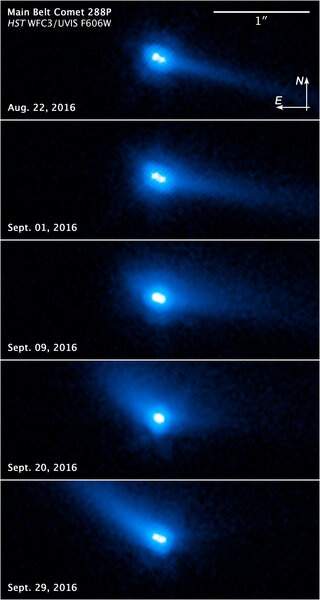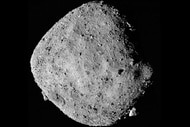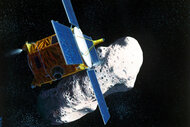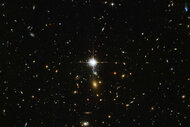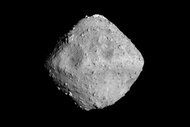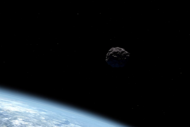Create a free profile to get unlimited access to exclusive videos, sweepstakes, and more!
A binary asteroid that’s actually a binary comet
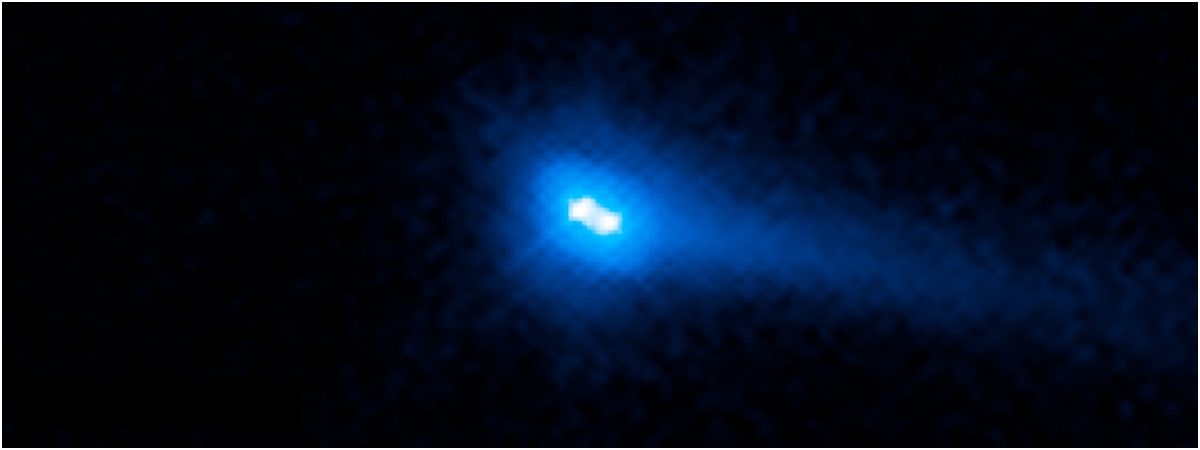
If I ask you to close your eyes and picture an asteroid, you’ll probably think of a gray, battered, vaguely spherical object with lots of craters.
If I ask you now to picture a comet, you’ll probably think of a bright fuzzy thing with a long, diffuse tail.
However, nature cares not for your arbitrary distinction between cosmic objects! Sometimes, we find things that straddle the line between two different categories. And oh, my, does 300163 (2006 VW139) push every boundary we have for such things.
This object was discovered in 2006 by Spacewatch, a program dedicated to finding small objects in the solar system. It orbits the Sun between Mars and Jupiter, in what’s called the main asteroid belt. The orbit was determined to be fairly elliptical, which is unusual for an asteroid but not too shocking.
Then things got weird. In 2011, observations using Pan-STARRS revealed VW139 was surrounded by a halo of dust, and had trails of dust streaming out away from it. Sometimes asteroids get these haloes if they suffer a collision with another asteroid and material gets blown out. But observations over the course of a month showed no change in the halo’s brightness — you’d expect stuff blasted out by a collision to expand and fade over a few days. This meant the object was continuously producing dust, blowing it off the surface.
That makes it more like a comet: While asteroids are nearly all rock and/or metal, comets are rock and various ices (like frozen water, carbon dioxide, and carbon monoxide). So it was then reclassified as a main belt comet and given the second name of P/2006 VW139 (as well as, confusingly, 288P, which is how most press releases refer to it, but from here on out I’ll just call VW139).
But now the plot has thickened again. Observations using the Hubble Space Telescope in late 2016 (when the object was closest both to Earth and the Sun) revealed yet another surprise: VW139 is binary!
Instead of being a single object, it’s actually two large chunks orbiting each other. Even with Hubble, these were tough observations, and it’s hard to constrain the physical characteristics of the two chunks and their mutual orbit around each other. But it’s likely each chunk is on the order of a kilometer or so across. Models of their motion can’t pin down the orbital period, but the model solutions tend to fall into three different groups of 103, 135, and 175 days (meaning one of these is likely the correct period, but it’s not clear which one).
The orbit of the two chunks around each other is likely highly elliptical, meaning it’s not even close to being a circle. Ellipses are in part defined their semi-major axes, the distance from the center of the orbit to the most distant part. For VW139, this distance is likely to be between 70 and 140 kilometers, which is yet another oddity.
Why? Well, we’ve discovered lots of binary asteroids, but in most cases, the two components are very different sizes, and the orbits are much smaller compared to the size of the objects (that is, the two bodies orbit pretty tightly) and not nearly so elliptical. The mutual orbit of the chunks in VW139 is a hundred or so times the size of the chunks themselves, which is very wide.
So, what is this thing, and how did it form? Well, a big clue is that it seems to be most active when it’s closer to the Sun in its orbit. That is a strong indicator that it has water ice in it, and as it warms up that turns directly into a gas (this is called sublimation). Using physical models of how the dust reflects light, astronomers think that this first releases pieces of rock the size of gravel, but over time, finer-grained material lifts off as well. Eventually, as VW139 moves away from the Sun, the activity drops, and some of the dust settles back down, to be released the next time the comet warms up (it has an orbit about 2.6 years long).
Interestingly, surface ice on an object like this cannot exist for long at this distance from the Sun, certainly not for billions of years. So it’s likely that some relatively recent event — perhaps just a few thousand years ago — split a large object in two, forming the binary. It may have been a collision, but another possibility is that the single object got spun up by outside forces (sunlight can actually do this via a process called the YORP effect) and the centrifugal force broke it apart. Either way, freshly revealed ice would then sublimate and blow outward, and this can contribute to separating the two chunks into their current wide spacing.
I do so love stories like this. When I was a kid, asteroids were asteroids and comets were comets. Then x`we started seeing objects on that border between them, dead comets that look like asteroids and asteroids that blew off material like comets. It was hard to accept at first, but now we see that there is an even finer degree of resolution in this spectrum, likely with objects all along the line between the two ends. Nature was telling us not to be so rigid in our beliefs, engendering a wider view by scientists, a willingness to accept that not everything in life is either one thing or the other.
I find that transformative, and wonderful. It makes life so much more diverse and interesting!
